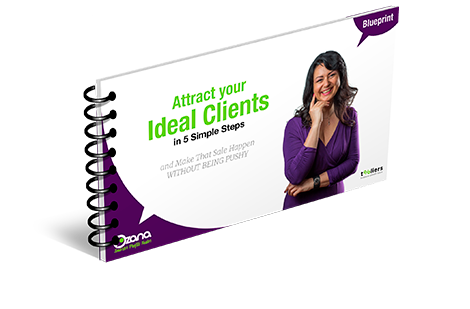How to Communicate with Your Potential Clients in Each Stage of Their Buying Journey
Advice: Consider the 3 distinct stages in your buyers’ journey (awareness, consideration and decision) and adapt your communication to your client’s specific needs in each stage.
People buy when they want, not when we want to sell to them. Discover how to correlate your promoting messages to the buying stage where clients find themselves.
Everybody talks about a communication centered on client needs. Very few companies manage however, to put theory into practice. Why is this happening? Because it is not enough to adapt our messages to the general needs of our customers but we have to build our messages according to the buying journey they are on. In each stage, potential customers have some specific needs.
Unfortunately, most companies are trying to convince their clients that red wine is better than white wine, although the client has not yet decided whether he wants wine or beer with dinner. I will present a simple example to help you avoid such mistakes.
Buying Is Like a Journey
Think of the persuasion process as a journey through which clients get closer to your product. Stops on the route of purchase are “Awareness”, “Consideration” and “Decision”. Our mission: to create relevant messages to specific needs in each “station”. Of course not all clients travel the line all the time, some already know what they want to buy. Most of your potential customers are just beginning the journey and if you ignore them you will narrow the base of potential clients enormously.
Let’s take an example. Biofresco Ltd sells juices made from premium ingredients in its own location and deliveries to companies. How can Biofresco reach more people and convince them to consume its natural juices? The first “station” on Biofresco’s journey is “Awareness”.
The First Station: Awareness
The worst thing you can do, in the awareness stage, is to sell red wine to the beer drinkers. The objective at this stage is to qualify a relevant audience. Biofresco can post on their own blog healthy lifestyle articles to make this work. An article about the benefits of taking vitamins and other antioxidant nutrients from unprocessed fruits and vegetables will attract good potential customers for Biofresco and will eliminate people who consume Coca-Cola. The presentation of a natural antioxidant juice recipe that can be prepared at home on the Biofresco Facebook page is another excellent idea. Those who wish to follow a healthy lifestyle will be naturally attracted to this information.
What we aim for at this stage is for the potential customer to want our product benefits and to associate our brand with this type of benefit. The first rule of “Awareness”: we never talk about the product, we talk about the benefits.
The Second Station: Consideration
In “Consideration”, the audience is already prepared to hear about our product but the focus is still on the benefits rather than the product itself.
Potentials drinkers of Biofresco juice can be helped to choose the drinks through a comparison table between juices and drinks that are sweetened with sugar or artificial sweeteners.
The comparison between benefits and risks may be presented as a blog article, a Facebook infographic, a poster in the store location, and / or leaflets promoting a table and include a discount coupon.
The Final Station: Decision
Finally Biofresco is free to talk about their greatest passion: their own product. At this stage they talk with customers who have been qualified through the Awareness and Consideration stages, so they will react positively to the information that will confirm their buying decision. Nutritional information and information about the quality of ingredients used can strengthen purchasing decisions. During this station we will also present special offers and discounts.
A Compass for the Purchasing Journey Followed by Clients
You can use the following questions as a compass for relevant customers to purchase your product or service:
- How can I help my potential customers to better realize their needs and to relatet hose needs with my brand(Awareness Step).
- How can I help my potential customer to evaluate more easily and accurately the alternatives which satisfy their need, by informing him of the advantages and type of product / service offered by my company (Consideration Step)
- How canI help the client to decide which solution is better and give them more reasons to choose my offer(Decision Stage)
If you had just bought a car, and you receive an email to offer you this special car, how would you react?
What about if you were thinking about changing your car, and you receive such email, how would you react?
What about if you know you want a Mercedes AMG, and you get an offer to buy the exact AMG you want, with 10% discount. How would you react?
Would you react the same in all these 3 situations?
I hope your answer is no.
And I hope you understand that your clients would not react the same to your communication either, because they are also in different stages about wanting to buy the type of product or service you offer.
This is why you need to consider the 3 distinct stages in your buyers’ journey (awareness, consideration and decision) and adapt your communication to your client’s specific needs in each stage.
People buy when they want, not when we want to sell to them.
If you like to take action, click here NOW to
DOWNLOAD THE BLUEPRINT AND START YOUR JOURNEY TO BUILDING YOUR SMARTER BUSINESS
DOWNLOAD THE BLUEPRINT AND START YOUR JOURNEY TO GROW YOUR BUSINESS

I mean to really grow your business
… so you don’t have to worry about how much things cost
… so you serve all those who could benefit from your help.

